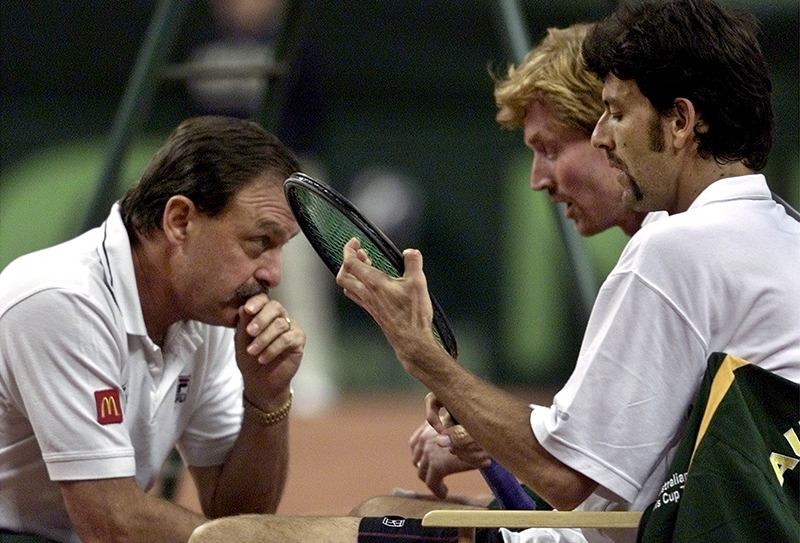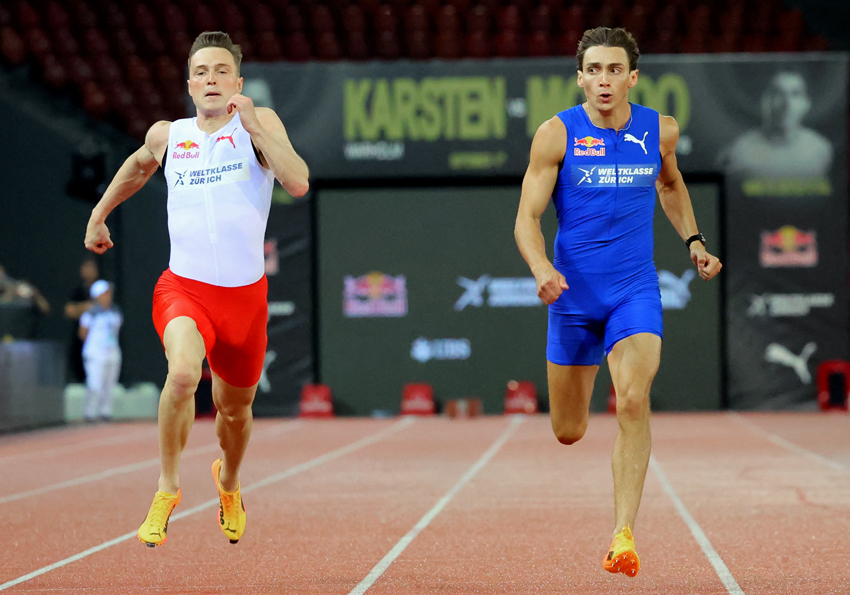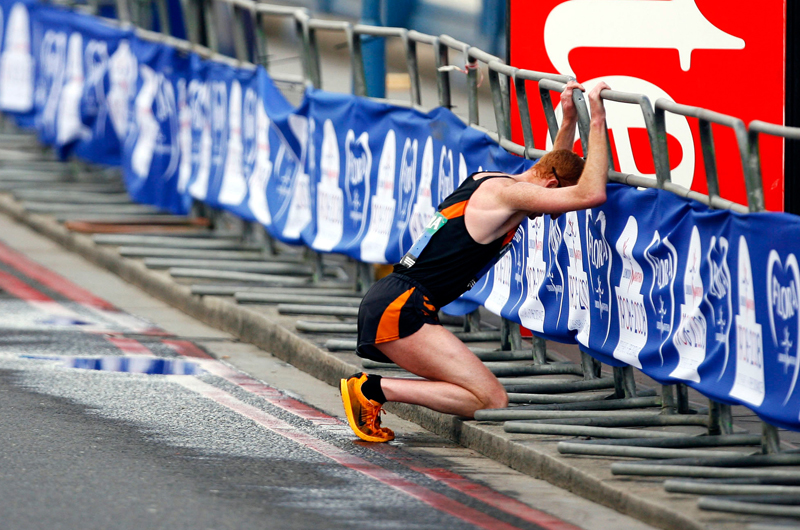The heat is on: develop a ‘thrive under pressure’ mindset

Professor Andy Lane explains the link between training in extreme environmental conditions and the development of mental toughness
The ability to perform skills well, maximize physiological capacity, and make the best decisions is more difficult when performing under pressure – ie in competition - than when in training. Performing under pressure involves trying to achieve a goal or reach a standard of performance that matters deeply to the athlete involved. This could be striving to achieve a personal best time or position, or performing a task involving significant threats to personal safety.Pressure affects all athletes
Performing under pressure is not the exclusive preserve of Olympic or elite athletes; rather it is something that can be experienced by all athletes at any ability level. For example, how often do we hear people express emotions such as anxiety and fear when talking about achieving a valued goal? This could be runners who have set themselves a goal to finish a marathon in sub three hours, or rowers who try to perform the 2km distance in sub seven mins. A cursory glance of social media reports following a race highlights the significance of these goals to the athletes involved, and suggests many athletes place a great deal of importance on achieving a personal best. The key point here is that performing under pressure is something we all experience, and if managing pressure depends on a set of personal skills, then getting better at applying those skills is desirable.Why does performing under pressure influence performance?
Performing under pressure leads to changes in our physiology (the way the body works chemically and hormonally) and psychology (the way our brains process information), which in turn can influence how well we perform our skills. For example, there are direct measurable changes such as increased heart rate along with indirect changes such as perceptions of how hard exercise feels. What is clear is that when you perform under pressure, your actual and/or perception of physiological feedback changes, and the consequence is that exercise feels harder and more intense.It is hard to simulate genuine ‘pressure situations’ in training, which means that getting used to performing under pressure when undertaking training is very difficult. However, it is possible to use performing in extreme environmental conditions - namely heat and altitude - as means to create similar changes in physiological responses as those that occur in an ‘under pressure’ situation. This in turn provides an alternative method of training to perform under pressure(1).
It is well documented that strenuous exercise in extreme environments such as altitude, heat and cold imposes increased physiological and psychological stress(2). And because adaptation to extreme environments takes a few weeks, there is a window of opportunity for athletes to use their elevated physiological responses when performing in extreme environments to help learn how to cope with these responses, which in turn can help coping under pressure. In my work, I use this process to help athletes learn about themselves, how to interpret their physiological and psychological responses, and then use this experience to perform successfully. In addition, I also talk about how mental skills training can be used to help athletes perform under pressure. For example, research shows that learning sport psychology techniques such as self-talk can help athletes cope with extreme environments (see this article)(3).
How to learn to cope?
A key starting point is that you can utilize interactions with your environment to learn to cope, or at least improve your coping ability. In the case of training/performing in extreme environments, this will make the intensity you perform at feel much harder than it usually does. You need to accept this point and recognize that the goal is learning to cope. This is an important message because you need to reflect on and evaluate the session via what you have learned rather than focus on the times and speed.You also need to adopt a ‘growth mindset’ for this to work(4). This is where you aim to take on challenges, to learn about your ability to persist. In these challenges, it is important not to attribute a slow performance to a lack of ability or to describe yourself as ‘slow’. Athletes with a growth mindset look for opportunities to learn, and failure can actually provide useful feedback on progress.
Therefore, coping with pressure can be viewed as a process that you are at the start of. In this process, you will improve via exposure, guided training, and making use of feedback. It is not something you are good or bad at, but a process where you improve. Therefore, it is important to welcome performing under intense physiological load as a learning opportunity and hold a perception that you will improve this ability via training. You will also need to pay attention to what you say to yourself, and how you act on your own self-talk(3).
Summary and practical guidance
Reflecting on mental preparation and mental states under pressure situations, making informed changes, and charting progress following change presents a route toward thriving under pressure. A mindset where you wish to learn about how you cope under pressure (and via that learning process, get better), should over time, ensure you can perform consistently at your best in high-pressured situations. In our work, we encourage using physiological stressors such as performing in heat, cold or altitude to help create physiological pressure. In our laboratory we use our climate chamber to create stress at heat and altitude. However, entering into winter (at least in the northern hemisphere), cold conditions will be readily encountered over the next few months. Hot conditions can occur naturally, but can also be generated by wearing excess clothing!Practical tips
If athletes would like to try this strategy, here are some tips- Having established a challenge, accept it will be physically and mentally challenging. For example, when performing in the heat or at altitude the workload you experience will be greater for the same intensity, presenting physical and mental challenges to manage.
- Reflect on how you will cope trying to perform at a higher perceived intensity when the physiological feedback feels different.
- Develop a mental strategy or ‘map’ for maintaining the desired intensity; for example, focus on the moment, or the here and now, focus on smooth performance, and image yourself performing with an excellent technique.
- Set aside time to mentally prepare before attempting the challenge; set goals for the quality of imagery you will be undertaking (ie making it clearer, louder, more vivid), prepare some self-talk that is inspiring or useful for good technique.
- Having performed the challenge, reflect on the performance. Did you deliver your mental plan? Rate the extent to which you did so on a 1-10 scale where 1 = poor and 10 is very good. Use these ratings to compare your performance in future similar challenging sessions. This way you can track progress.
References
- Journal of Sports Sciences. 2004; 22, 886-897
- Acta Astronautica. 2021; 187, 36-42 doi.org/10.1016/j.actaastro.2021.05.045
- Medicine & Science in Sports & Exercise. 2008; 40, 387–396
- American Psychologist. 2020, 75(9), 1269–1284. doi.org/10.1037/amp0000794
You need to be logged in to continue reading.
Please register for limited access or take a 30-day risk-free trial of Sports Performance Bulletin to experience the full benefits of a subscription. TAKE A RISK-FREE TRIAL
TAKE A RISK-FREE TRIAL
Newsletter Sign Up
Testimonials
Dr. Alexandra Fandetti-Robin, Back & Body Chiropractic
Elspeth Cowell MSCh DpodM SRCh HCPC reg
William Hunter, Nuffield Health
Newsletter Sign Up
Coaches Testimonials
Dr. Alexandra Fandetti-Robin, Back & Body Chiropractic
Elspeth Cowell MSCh DpodM SRCh HCPC reg
William Hunter, Nuffield Health
Keep up with latest sports science research and apply it to maximize performance
Today you have the chance to join a group of athletes, and sports coaches/trainers who all have something special in common...
They use the latest research to improve performance for themselves and their clients - both athletes and sports teams - with help from global specialists in the fields of sports science, sports medicine and sports psychology.
They do this by reading Sports Performance Bulletin, an easy-to-digest but serious-minded journal dedicated to high performance sports. SPB offers a wealth of information and insight into the latest research, in an easily-accessible and understood format, along with a wealth of practical recommendations.
*includes 3 coaching manuals
Get Inspired
All the latest techniques and approaches
Sports Performance Bulletin helps dedicated endurance athletes improve their performance. Sense-checking the latest sports science research, and sourcing evidence and case studies to support findings, Sports Performance Bulletin turns proven insights into easily digestible practical advice. Supporting athletes, coaches and professionals who wish to ensure their guidance and programmes are kept right up to date and based on credible science.








